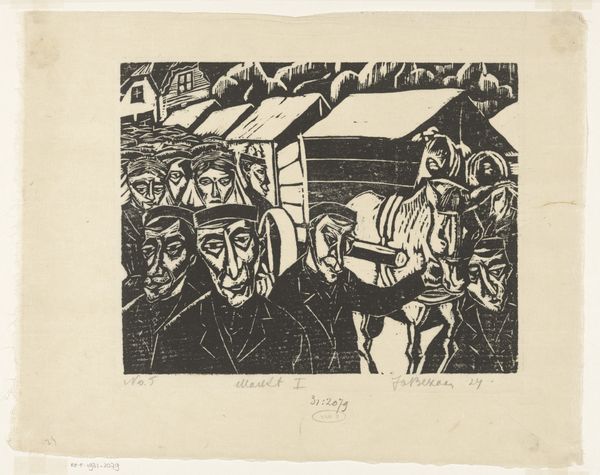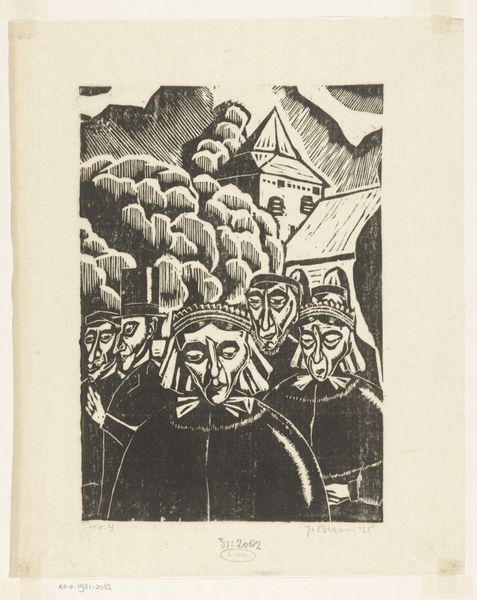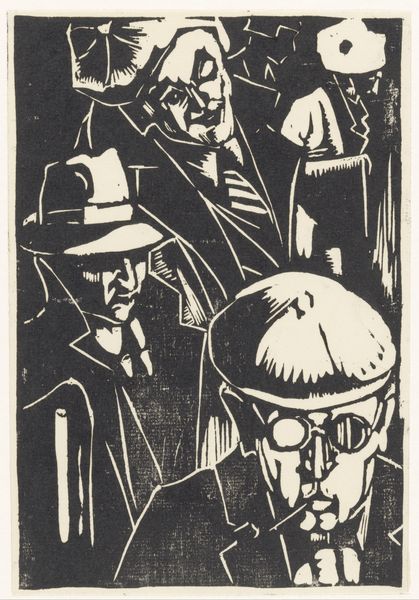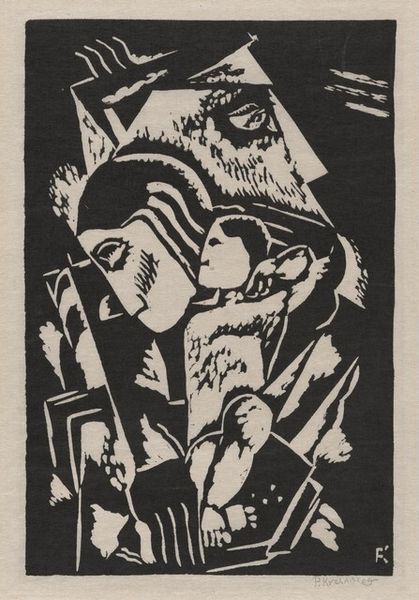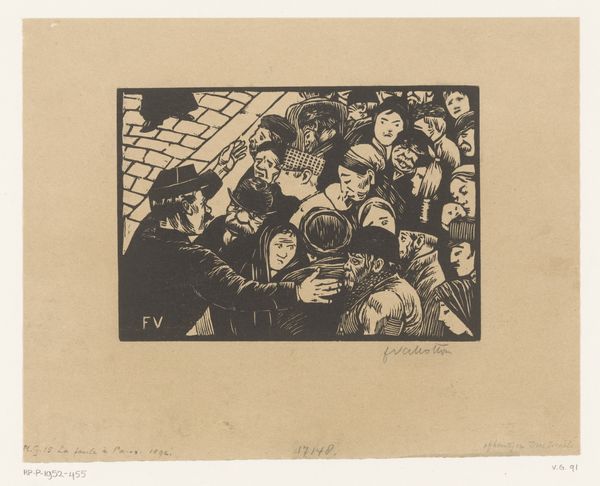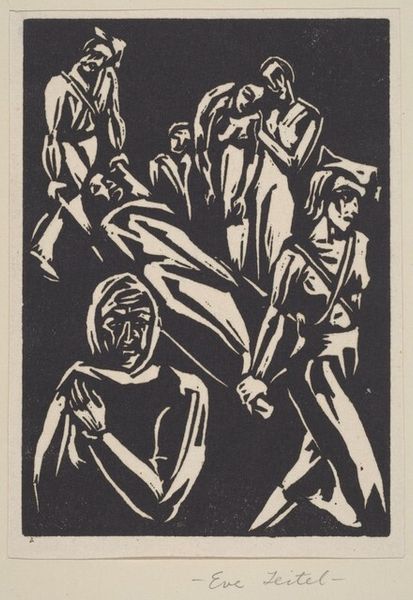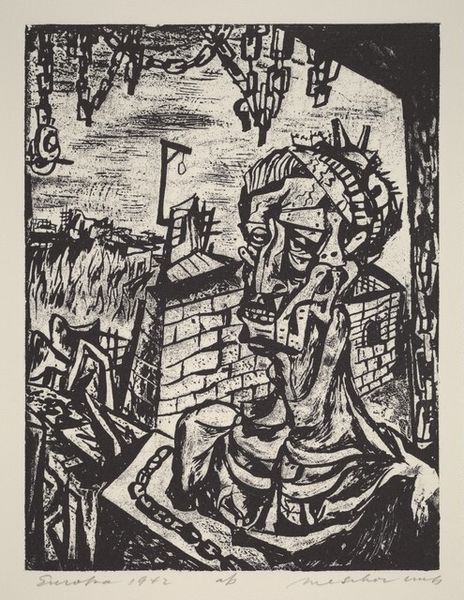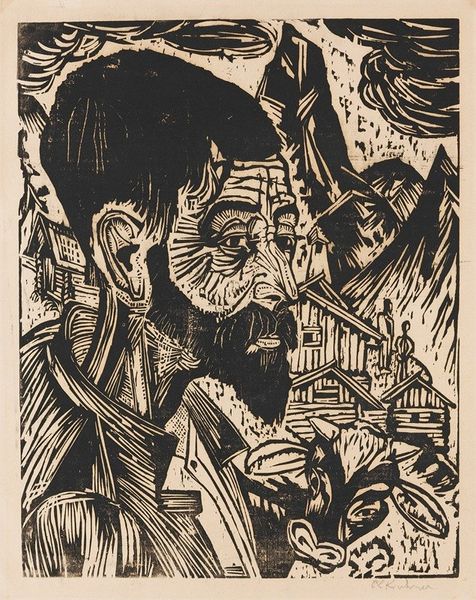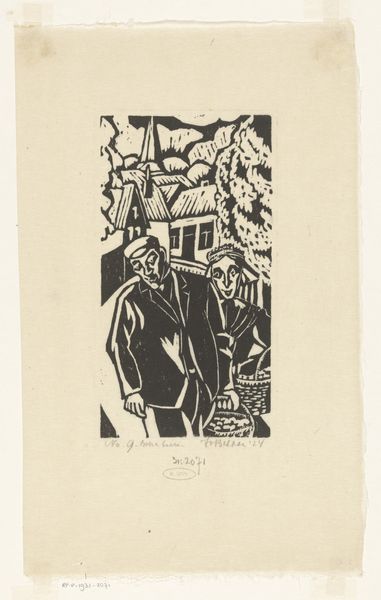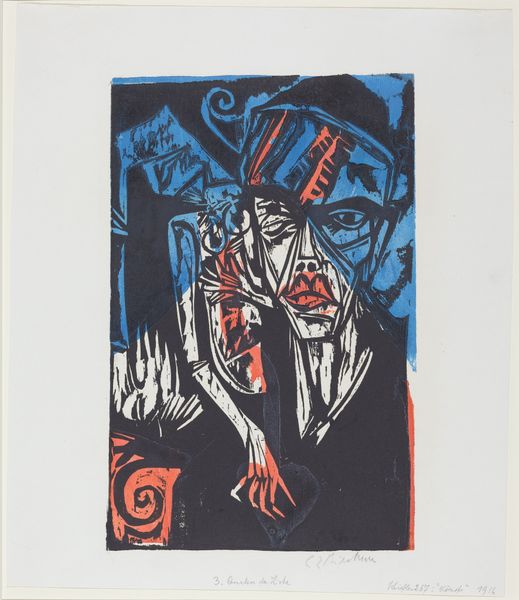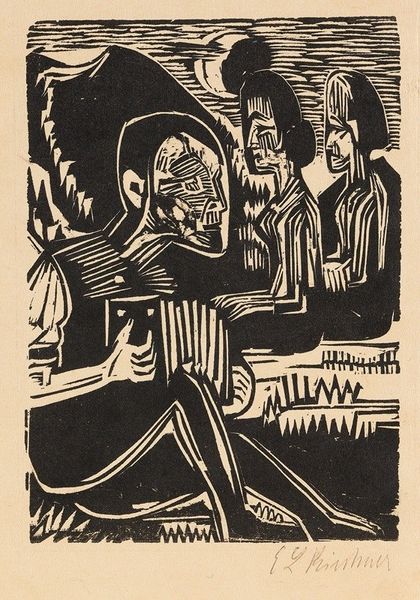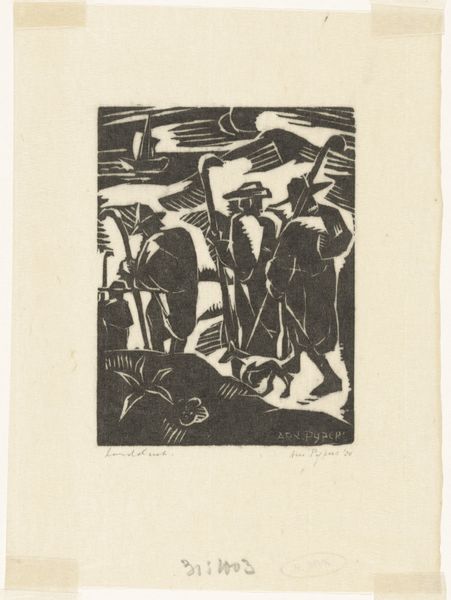
print, woodcut
# print
#
caricature
#
old engraving style
#
caricature
#
expressionism
#
woodcut
#
genre-painting
Dimensions: height 313 mm, width 246 mm
Copyright: Rijks Museum: Open Domain
Curator: This woodcut by Dick Ket, titled "Kerkgangers" and dated 1929, presents a striking image of churchgoers. The stark contrasts immediately catch the eye, wouldn’t you agree? Editor: Absolutely. The high contrast creates a solemn, almost ominous atmosphere. The figures seem trapped within these rigid black lines. There’s an unsettling sense of uniformity. Curator: Considering the expressionist style, it is intriguing how the medium of woodcut reinforces this feeling. The labor involved, the act of carving away at the wood block...it's a slow, deliberate process. And consider how many prints could be produced from one block - the endless repetition feels deliberate. Editor: And it’s that feeling of social repetition and pressure that gets me. Are we seeing an insinuation about the societal expectations projected onto the working class during that time? Notice how many faces convey a sense of weary resignation, and it strikes me that Ket may be commenting on the suffocating nature of institutional religion and class conformity. Curator: That’s an interesting take. The rigid, almost crude carving method, creates the opposite feeling for me – like Ket aimed to free himself from the classical and academic artistic restraints. Editor: Well, if we look at Ket’s biography and his social struggles, that interpretation aligns rather well, doesn’t it? As a queer artist working within a rather intolerant, classist social structure, I can imagine it became an act of rebellion of sorts. Curator: I agree. By using such basic means – the woodcut—Ket elevates it to a highly personal expression of discontentment, regardless of how that was influenced. Editor: The sheer materiality – the physical engagement with the wood and the pressure of printing—becomes intrinsically tied to that theme of suppression but simultaneously resisting the establishment. Curator: It all coalesces so intriguingly, doesn’t it? Thank you, that’s definitely helped me to contextualize this piece in a way I hadn’t quite grasped before. Editor: It was my pleasure, I'm always happy when historical contexts meet material explorations in interesting ways.
Comments
No comments
Be the first to comment and join the conversation on the ultimate creative platform.
